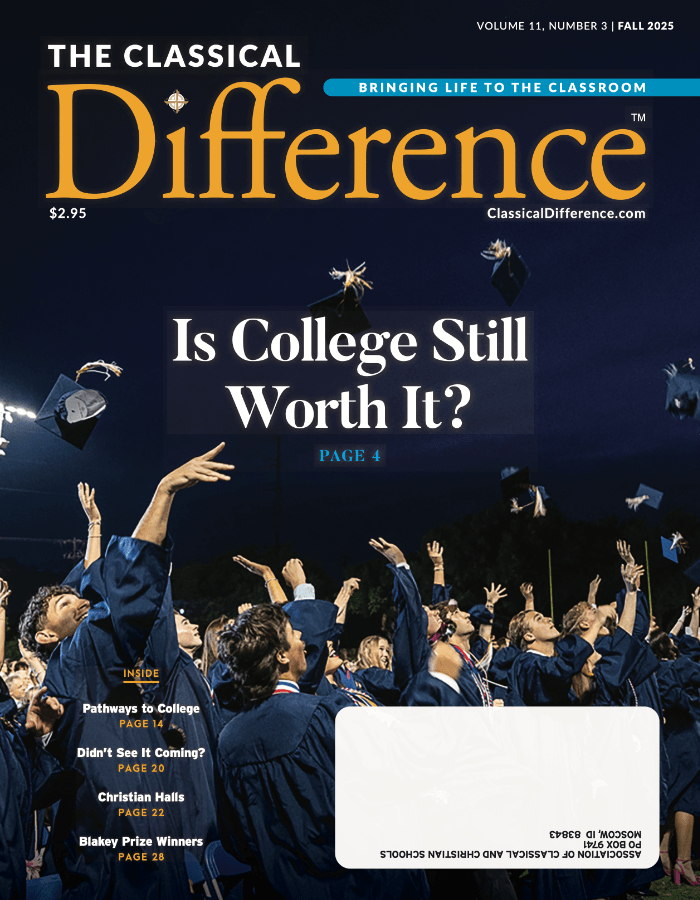by CHRISTOPHER JOHN MAIOCCA | Winter 2016
A study in American innovation

One key evidence that our educational system may indeed be broken is the meteoric rise of innovation-based charter schools.
In 1996 there were approximately 500 of these schools spread over 16 states. Today, all but eight states have joined the movement, as nearly 7000 charters currently serve 2.2 million students, and even this falls far short of the demand.
Families are attracted to these schools for an array of reasons. Statistically speaking, the leading one is innovation. Well over half use “non-traditional” pedagogies in the attempt to reverse the depressing trends that have defined American education for the last 30 years.1
There is much to celebrate here; not least of which is that American entrepreneurial spirit that always seems to find a way to “get ‘er done”—with or without the government’s help. 2
There is also much to cause concern. As any entrepreneur will tell you, many new ventures do not succeed. Investing in a mousetrap manufacturing company may indeed be a chance worth taking, if one truly believes they have discovered a better way to make a mousetrap. However, schools are dealing with a much more precious commodity—namely, our children. Here, innovation is a bit scary.
Another thing that almost any entrepreneur will tell you is that there are essentially two ways to ensure a venture’s success. The first is to go forward with breathtaking innovation. The second is to go backwards with painstaking patience. Only wisdom can determine which course is better.
For example, if technology is your industry, then go forward with all the innovation you can muster. You’ll need it.
But if your goal is to open a Pâtisserie on Main St., then wisdom says you must go back, with painstaking patience, to discover how the best pastries in Europe have always been made. Both paths depend on discovery and innovation—but they move in very different directions.
With regard to our children’s education, it is sometimes difficult to decide which direction to take, and since you are reading this article, you are undoubtedly sympathetic to the reports that traditional, government education has fallen on hard times. Perhaps you have even taken this option off the table completely. So what now? Clearly a decision this big calls for wisdom.
We want to suggest something that may sound blasphemous to the modern ear, and it is this: When it comes to the education of our children, it may be wise to steer clear of innovation. Why?
The answer is embedded in our earlier analogy. Schools are much more akin to Pâtisseries than they are to Tech Companies, and our children (to really stretch the analogy) are more like croissants than computers.
What we mean is this: What makes a computer great today, is no real indicator of what will be successful tomorrow, and in five years, the game could totally change. “Innovation or Cremation” is Silicon Valley’s unspoken mantra.
A croissant, however, is not so unpredictable. The same flaky goodness that helped Charles Martel defeat the Moors at the Battle of Tours is still available down the street at our local French bistro. As long as butter, flour, and eggs remain the same, we have, at our fingertips, the blueprint for deliciousness.
In the same way, schools are working with a very stable medium—one not nearly as fussy as software. In other words, the constituent nature of adolescents is exactly the same today as it was 1000 years ago. Therefore, what worked in the past must work today. And it does.
At the heart of a Classical Christian Education is the historical understanding that at one point our civilization really did know how to educate students, and that, as far as the education of our children goes, the best way forward is undoubtedly backwards.
Soli Deo Gloria. ![]()

CHRISTOPHER JOHN MAIOCCA teaches secondary English, history, and Bible at Horizon Prep, Rancho Santa Fe, CA.
1 Ted Rebarber. edreform.com. Center for Education Reform. 7 Sept. 2014. Web. 4 Dec. 2015. < https://www.edreform.com/wp-content/up- loads/2014/02/2014CharterSchoolSurveyFINAL.pdf >.
2 Of course I realize that charter schools are publicly funded. I am referring rather to the entrepreneurial spirit that compelled those public funds to be dis- bursed to charters in the first place.











[…] In an article entitled, “Education and the Art of Pastries,” Christopher Maiocca argues that “the best way forward [in the education of our own children] is undoubtedly backwards.” What he means by this is simply that the only way of properly training our kids to delight in Truth, Goodness, and Beauty is to regain the lost tools of learning rather than attempting to innovate – or evolve – our way to a higher plateau in educational enterprise. Indeed, as parents desirous to cultivate a love of virtue and ultimately a passion for the glory of Christ, our mantra should… Read more »